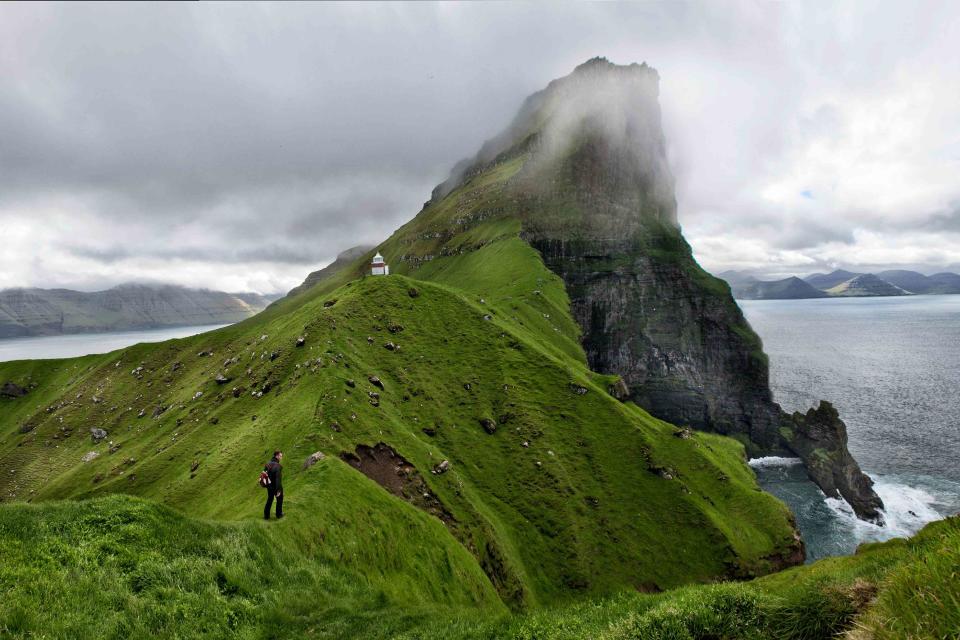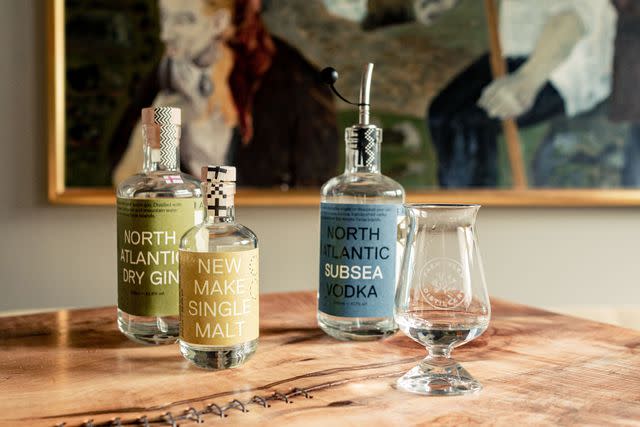This Nation Has More Sheep Than People and Is Home to One of the Most Ambitious Whiskey Distilleries on Earth
The Faroe Islands is ready to make a name for itself in the world of whiskey.

Per Morten Abrahamsen
If you've never heard of the Faroe Islands before, I don't blame you. It's an extraordinarily remote country, located in the North Atlantic, complete with windswept cliffs, a higher population of sheep than people, and towering waterfalls. Previously part of the kingdom of Denmark, it is easily accessible from Copenhagen via a short flight and is well worth a visit for anyone who loves nature, food, and booze. If you love all three, well, this small country is a must. In fact, that sentiment has never been so true, because a recently opened distillery on the islands believes it can create a single malt whiskey so good that will give its Scottish counterparts a run for their money.
Faer Isles Distillery, one of the most remote distilleries in the world, and one of two distilleries on the Faroe Islands, was founded in 2018 by a group of whiskey enthusiasts who realized that the Faroe Islands might have the Goldilocks of conditions to make excellent whiskey.
"If whiskey needs consistent air pressure, high salinity, and high humidity, the Faroe Islands are then, in theory, a better locale than the Highlands for this process," Dánial Hoydal, a founding partner of Faer Isles Distillery, says.
Located in Vestmanna, about a 40-minute drive from the capital of Torshavan, Faer Isles Distillery sits on a pier overlooking an inlet. The distillery is small and humble, so humble that when I visited in the middle of the day, one of the founding partner's daughters, who must be under 10, was avidly watching a YouTube video of Minecraft on a projector screen pulled down in the then-empty bar room. But despite its low-key appearance, the distillery is all business when it comes to creating a distinctly local whiskey.
So why did it take until 2018 for whiskey to hit the Faroe Islands? It certainly wasn't due to a lack of trying. The lengthy wait can be blamed mostly on a strict prohibition implemented in the early 20th century after several farmers lost all their land from drinking (and gambling). Beer was allowed back in the '80s, while full prohibition wasn't repealed until the early '90s.

Ingrid Hofstra
Despite this late start in distilling, beliefs are strong that they can craft a beautiful spirit. And not just from the founders. Much of the funding for the project comes from crowdsourcing — a majority of the funding came from GoFundMe.
To achieve its lofty goals, the team at Faer Isles started simple. Scottish grain and American bourbon barrels lay the foundation of what is a straightforward process with one subtle but important twist: How the barrels are aged.
In the Faroe Islands, there's a flavor and a process known as Ræest. It's so well known that one of the top restaurants in Torshavn is even named Ræest. It's something you only experience by eating the meats traditionally aged outside here on the islands, which taste almost like a slice of jamón infused with blue cheese. It is funky. It is the kind of food that causes you to run through the emotional gamut and back again — it fills you with wonder and curiosity, then you want to spit it out, and before you know it, you're wondering where you can get it in the U.S. (you can't). The locals love watching visitors try it for the first time.
"Because there was no salt on the islands for hundreds of years, fishermen would hang their fish outside of their homes to preserve them," Hoydal explains. "The high salinity coming from the ocean cured them within days, and the same went for lamb meat — farmers would put the meat in wooden cabins and let the salty air blow over them," he adds. The idea, then, is to let these barrels Ræest, and by doing so, hope that the whiskey inside will achieve a unique Faroese maritime flavoring from sitting just offshore, with the cold Atlantic Ocean air washing over them.
There's no way of knowing whether the team's plan will work. At least not yet, as the whiskey still needs to age for a few more years before it's ready for public consumption. But it certainly sounds great, and after sampling the distilled, unaged malt, I have high hopes for the future release.
If you need further evidence that this whiskey will likely be a success, you can always visit the Faroe Islands yourself and take a guided tour of the distillery to see the production process in real time and to taste its other products. Faer Isles offers a dry gin made distilled with seaweed. According to the co-founders, they went through about 40 different types of seaweed before discovering the correct varietal — the Latin name, they joke is "ocean spaghetti," — which gives the gin an oceanic flavor with a little bit of fat coming in on the backend. I think it would be perfect for a briney martini.
There's also an aquavit, distilled with seaweed, but perhaps the standout story is the vodka. Another unique aspect of the Faroe Islands is that the 18 islands are connected via a network of undersea tunnels stretching nearly seven miles. When the Norwegian company behind the construction installed one of these tunnels, they discovered a freshwater source below the seabed. This is the water that Faer Isles is using to craft its vodka.
If there's one thing the Faroe Islands has a bounty of, it's stories to tell. And hopefully, soon, you'll be able to visit and hear them all with a glass of local whiskey in hand.
For more Food & Wine news, make sure to sign up for our newsletter!
Read the original article on Food & Wine.

